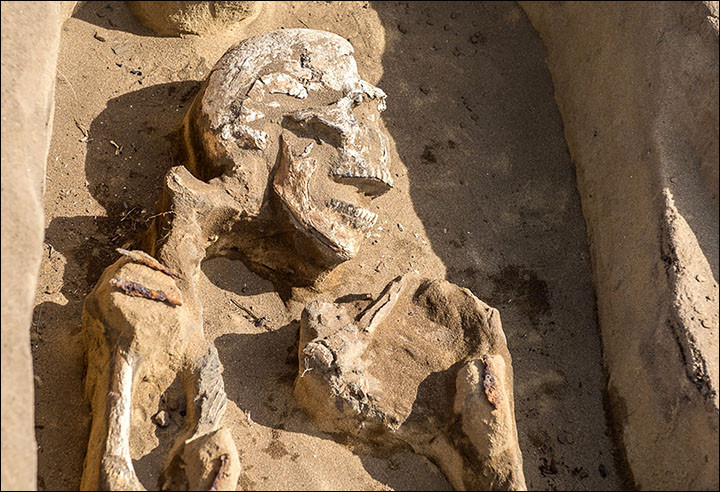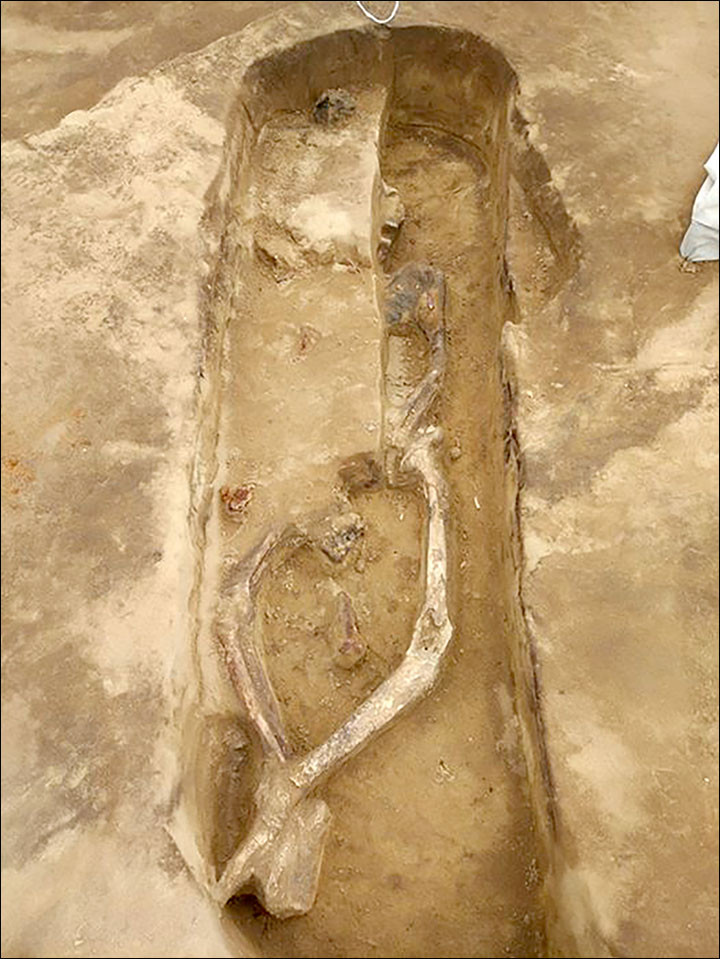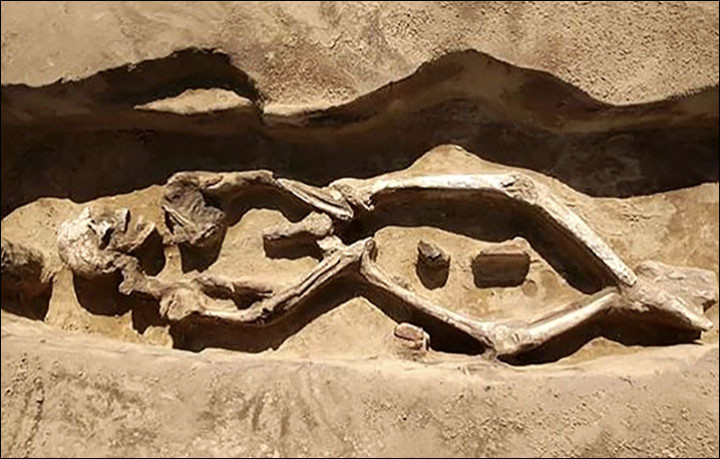Siberia: Ancient grave reveals 'dancing' skeleton tied up after death in ritual burial
The skeleton was nicknamed Mikhail by the archaeologists.
In the Russian Far East, in the province of Primorsky Krai, archaeologists have unearthed a strange-looking skeleton, that of a man in his thirties. He had been buried in an unusual position, with his knees sticking out to the side as if he was dancing.
The team of archaeologists had been working at the site conducting emergency excavations after serious flooding occurred in 2013. They found a number of graves filled with skulls belonging to elderly people who lived in medieval times.
But the most puzzling discovery was by far that of the dancing skeleton, which archaeologists have nicknamed Mikhail. He was lying on his back, with his legs slightly crossed at his feet, and his hands crossed around his pelvis.
"'He amazed us with his pose - he had been laid to rest on his back, with his legs looking as if he was dancing. His feet were crossed and knees wide open. None of the known burial ceremonies include this position of a body," archaeologist Denis Volkov told The Siberian Times.
Analyses have revealed that his hands and feet had probably been tied up. The archaeologists have also hypothesised about the cause of his death - it is possible that he was shot dead by an arrow, as arrow tips were found stuck in some of the bones. However, it is also possible that the skeleton's position and the presence of arrows are signs of an ancient funerary ritual.
"I believe that arrows were put on his shoulders as part of the burial ritual. Still, one of the tips is quite interesting, it's in the hip, very close to the bone and perhaps actually in the bone. It's hard to say yet why he died but we know that there is a big artery in the hip, and if it's injured, it causes a big blood loss," Volkov added.

Mikhail is thought to have lived between the 7th and 9th centuries and to have been about 30 when he died. He might have been related to the Tungusic ethnic group which today inhabits eastern Siberia.
Further analyses are now required to find out more about Mikhail's identity, to confirm how he died and more importantly, to solve the mystery of why he was positioned in such a strange way in his grave. Another theory that scientists are now exploring is that Mikhail's legs could have been deformed by tuberculosis or syphilis.


© Copyright IBTimes 2025. All rights reserved.





















